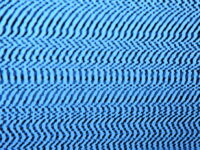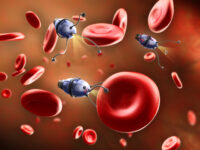It is commonly said that a sleep-deprived person has the mental performance of a person impaired by alcohol. However, the relationship between sleep and substances, such as drugs and alcohol, may be deeper than a simple comparison. Sleep itself is a significant factor in physical health and mental performance, yet many aspects of sleep remain elusive to researchers. Circadian rhythms essentially control many of the patterns of sleep, but their exact dynamics and tendencies are not entirely clear. The consumption of psychoactive substances, another confounding factor that influences the brain, is known to alter circadian rhythms, and researchers have begun studying the interactions of those substances and circadian rhythms to obtain a greater understanding of both. More specifically, experts have been evaluating sleep patterns during addiction, and how disrupted sleep and substance use disorders (SUD) may cyclically encourage one another.
Circadian rhythms, although often associated with sleep, are not solely mechanisms of sleep nor wake rhythms. Instead, they refer to any diurnal (24-hour) pattern of biological behavior, particularly on a cellular level, that occurs in response to external stimuli (zeitgebers) that train the rhythm to continue in the absence of any stimuli. For example, visible light is a zeitgeber that affects circadian rhythms, but those rhythms continue even when a particular light/dark pattern is not present. Research now suggests that psychoactive substances might be zeitgebers, as they have observed that the biological effects of drugs and alcohol persist during sober withdrawal.
The definition of the internal circadian clock also continues to change, heavily affecting how experts view sleep and SUD. The suprachiasmatic nucleus (SCN) in the hypothalamus was once thought to be the sole rhythmic clock in the body, but it is just the central coordination component of a system of peripheral clocks within different organs, tissues, and cells. The rhythmic responsibility in the body is dispersed, which may increase the ability of substances to alter the SCN to indirectly affect integral circadian rhythms by desynchronizing peripheral clocks that are under the SCN’s control. As a result, previously unaffected biological rhythms are secondarily desynchronized.
The rhythmic responsibility in the body is dispersed, which may increase the ability of substances to alter the SCN to indirectly affect integral circadian rhythms by desynchronizing peripheral clocks that are under the SCN’s control.
Given the multiplicity of biological rhythms, experts classify sleep as an effect of both the light/dark cycle and the homeostatic tendency toward sleepiness as one’s waking hours increase. These cycles are interrupted and repatternized when a person routinely uses psychoactive substances, potentially disrupting the centralized synchronicity of SCN rhythms and associated cycles of mood and cognition. Psychological condition is a factor in relapse and addiction. Thus experts propose the idea that SUD and circadian disruption are cyclically related (bidirectional); the effects of addiction encourage rhythmic incompatibility that results in physiological and psychological effects that make someone more likely to relapse. However, experts continue to debate whether sleep deprivation from irregular sleep patterns truly results from physiological and chemical effects of SUD or if the unpredictable nighttime life often associated with addiction is the culprit. Furthermore, it is rather unknown to what extent the substance-induced disruption of rhythms, when combined with irregular eating and physical activity, may affect sleep patterns. This conflict brings into question whether drugs and alcohol themselves are the true zeitgebers that train these bodily patterns.
Some of the most common experimental observations note that chronic overconsumption of alcohol correlates with insomnia and irregular secretion of melatonin. Insomnia and generally disrupted sleep typically continue during recovery from depressants like alcohol and are often related to depression and health issues that may encourage relapse. Turbulent sleep is also an effect of stimulants like amphetamine and cocaine. Many studies are conducted through conventional experimentation, but other studies require subjects to personally report and describe their experiences in a less-controlled environment. Experts struggle to reconcile the subjectivity of these reports. In general, studies come to largely different conclusions, oftentimes arguing directly against the results of another. For example, some researchers argue that sleep patterns of alcoholics are more related to age at initial consumption than quantity of consumption.
the effects of addiction encourage rhythmic incompatibility that results in physiological and psychological effects that make someone more likely to relapse.
Ultimately, do all of these sleep disruptions actually disrupt the circadian control held by the SCN? Experts remain unsure if the effects of substance-induced sleep deprivation are superficial or a result of sustained changes in deeper biological rhythms. Regardless, there is enough compelling evidence of a relationship between sleep and SUD to motivate continued studies on the dynamics of circadian rhythms associated with sleep and, by extension, substances. As insight into circadian rhythms deepens, the hope remains that a greater understanding of the body’s interdependent rhythms can help address the complications of chronic sleep deprivation and addiction.
Behavioral Neuroscience (2014). DOI: 10.1037/a0036268
Sleep Medicine Reviews (2012). DOI: 10.1016/j.smrv.2011.03.004






